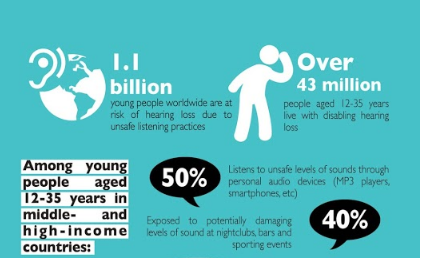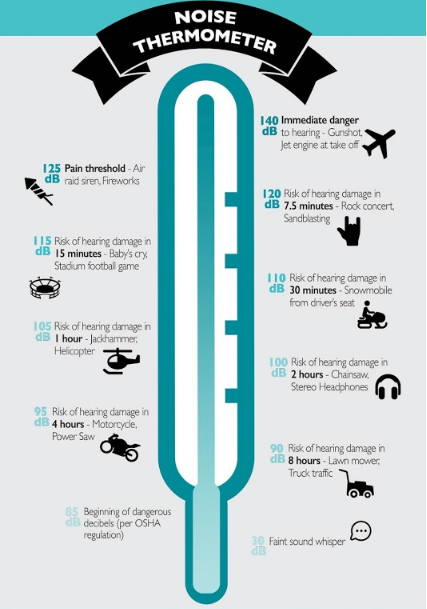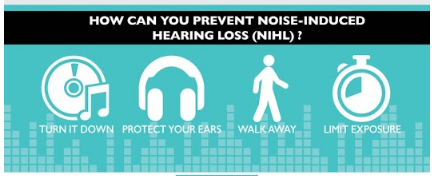After a few months of collaboration and creativity, we would like to present you with our latest Video Collection about Custom Protect Ear and our Innovative products, dB Blockers™, dB Com™, dB Life™ and dB Cares™. Below you will find the following videos:
- Noise-related hearing loss: Overview of dB Blockers
-
Hearing Protection You Can Hear Through: Communication
-
dB Blockers: How We Make dB Blockers at Custom Protect Ear
-
dB Blocker: How to Wear
Please share these video’s with the world and spread the news about Hearing Loss Prevention.
Noise-related hearing loss: Overview of dB Blockers
Overview Video of Custom Protect Ear’s Manufacturing process on custom hearing protection. Noise-related hearing loss is one of the most common occupational hazards affecting 25% of US workers. Custom Protect Ear’s Mission is to eliminate Noise-Induced Hearing Loss.
Our dB Blockers address all these issues to deliver three key benefits.
- dB Blockers are extremely comfortable – which means people are willing to wear them, for their entire shift.
- Second, people wearing dB Blockers hear each other better – which improves workplace safety, communication and productivity.
- And third, dB Blockers are more cost-effective than disposable hearing protectors, so you pay less for a better product.
Learn More about dB Blockers
Hearing Protection You Can Hear Through: Communication
Good communication is critical in every workplace. But communicating can be challenging at a noisy job site, where it’s necessary to protect workers’ hearing. When properly inserted, disposable hearing protectors block most of the sound, rendering users functionally deaf. To have a conversation the earplugs must be removed, leaving workers exposed to harmful noise levels, which can damage their hearing.
At Custom Protect Ear, we address this problem. That’s why we developed our super-comfortable dB Blockers; re-usable, personalized custom-fit earplugs which protect AND connect, through our proprietary “frequency tuned”, or “FT” filters.
Learn More about dB Com.
dB Blockers: How We Make dB Blockers at Custom Protect Ear
Your ears are as unique as you are. So shouldn’t your hearing protectors be unique too? At Custom Protect Ear, we custom-fit every pair of dB Blockers… …because it’s the only way to provide complete hearing protection and all-day comfort.
The fitting process typically takes place at the job site. We’re the only maker of custom hearing protection that takes impressions using our own trained and certified employees allowing us to own the process from beginning to end.
Throughout the process, our top priority is ensuring a comfortable fit, optimum performance, and reliability. Because we know that if your earplugs don’t feel good, you won’t wear them – and that could put your hearing at risk. Custom Protect Ear manufacturing is ISO9001 certified.
Learn More about the Implementation Process.
dB Blockers: How to Wear
How to Wear your dB Blockers.
To get the best comfort, fit, and protection from your dB Blockers, it is important to make sure you are wearing them and using them properly. To start, let’s take a quick look at the instruction card that came with your earplugs. Follow Video along with the Instruction card.
Learn more about How to Wear dB Blockers™


 Between turkey dinners and family reunions, Canadian Thanksgiving — which falls on Monday — can look pretty similar to its U.S. counterpart. But in fact, part of the reason Canadians first petitioned for the holiday was to celebrate their luck at not being American.
Between turkey dinners and family reunions, Canadian Thanksgiving — which falls on Monday — can look pretty similar to its U.S. counterpart. But in fact, part of the reason Canadians first petitioned for the holiday was to celebrate their luck at not being American.






 ducing ambient noise is a concern for some riders. If you plug your ears, how will you hear your bike’s engine or, more importantly, monitor traffic around you? Learn more about hearing protection you can actually hear through…
ducing ambient noise is a concern for some riders. If you plug your ears, how will you hear your bike’s engine or, more importantly, monitor traffic around you? Learn more about hearing protection you can actually hear through… 







